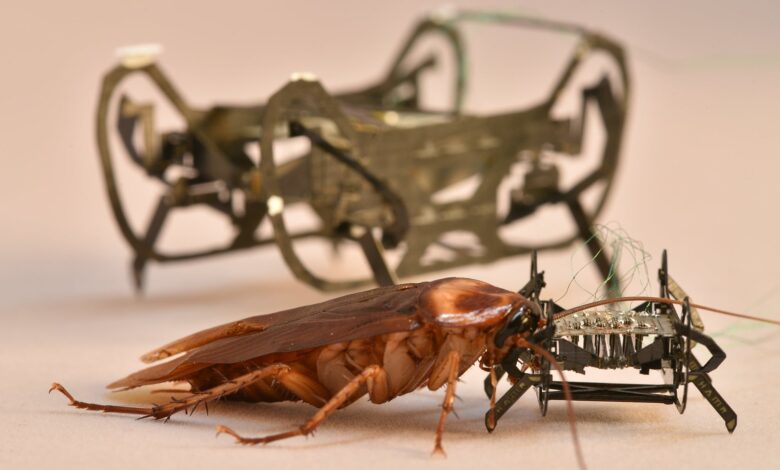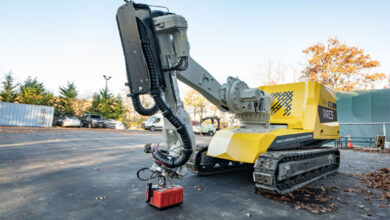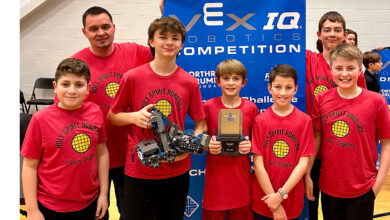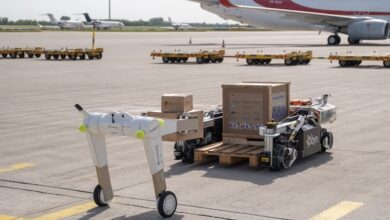Why animals run faster than their robot doppelgängers… for now

Modern robotics is awash with human-made machines mimicking the animal world. From stadium-surveying robot dogs to daddy long-legs-inspired exploration bots and just about everything in-between, there’s no shortage of mechanized animal doppelgängers roaming the world. Advancements in AI systems, new synthetic materials, and 3D printing have greatly improved these machines’ ability to run, climb, and shimmy their way around obstacles, often in the name of scientific exploration or public after.
But even with those technical advances and billions of dollars worth investment poured into the robotics industry in recent years, mechanized machines by and large still still lag behind against their biological equals in a head-to-head race. That basic observation underpins a new study by an interdisciplinary group of researchers published this week in the journal Science Robotics.
The researchers looked at five different “subsystems” associated with running and compared how they stack up better between animals and their robot counterparts. Animals, which rely on a tapestry of delicate bones and tissues, initially seem worse than machines on almost every individual component level. Their true advantage, the researchers discovered, actually lies in their complex and interconnected control over their bodies. That fluid interoperability makes animals greater than the sum of their individual parts.
“The way things turned out is that, with only minor exceptions, the engineering subsystems outperform the biological equivalents—and sometimes radically outperformed them,” SRI International Senior Research Engineer and paper co-author Tom Libby said in a statement. “But also what’s very, very clear is that, if you compare animals to robots at the whole system level, in terms of movement, animals are amazing. And robots have yet to catch up.”
Animals benefit from biological complexity and generations of evolution
Each of the five researchers focused on one specific subsystem associated with running in both animals and machines. These systems were broken down into power, frame, actuation, sensing, and control. Individually, machines beat out animals in almost all of these categories. In the case of frames, for example, robots with lightweight but strong carbon fiber bodies could support larger mass structures without buckling compared to animal bones. Similarly, the researchers concluded a robot’s computer-aided control system outperforms an animal’s nervous system in terms of overall latency and bandwidth.
But even though robots seemingly have stronger, more robust individual parts, animas are nonetheless more adept at making them work seamlessly together as a cohesive “whole.” That difference plays itself plainly when animals and robots are tested in real-world environments. While newer robots can certifiably accelerate quickly and even perform some acrobatic feats they pale in comparison to their biological counterparts in terms of fluidity and adaptability. Robots sometimes navigate tough terrain, but animals can effortlessly overcome obstacles like mud, snow, vegetation, and rubble without thinking twice about what they are doing.
[ Related: Can this robot help solve a guide dog shortage? ]
“A wildebeest can migrate for thousands of [kilometers] over rough terrain, a mountain goat can climb up a literal cliff, finding footholds that don’t even seem to be there, and cockroaches can lose a leg and not slow down,” Simon Fraser University Department of Biomedical Physiology and Kinesiology professor Max Donelan wrote. “We have no robots capable of anything like this endurance, agility and robustness.”
Animals also have another huge leg up: time. Unlike advanced robots which have only really made strides in the past few decades, animals have had millions, or in some cases, billions of years of evolution on their side. Animals, the researchers note, have a “substantial headstart over engineering.” On the flip side, robots have done an admirable job of closing that gap with staggering speed. The researchers say they are “optimistic” that robots will someday outrun animals.
“It [advances in robots] will move faster, because evolution is undirected,” University of Washington Department of Electrical & Computer Engineering Associate Professor Sam Burden said. “There are ways that we can move much more quickly when we engineer robots than we can through evolution—but evolution has a massive head start.”
Researchers hope these findings could help future development of running robots. Armed with these findings, robot makers could decide to focus more of their time and effort on component integration rather than simply building ever better and stronger hardware.
“The lesson we take from biology is that, although further improvements to components and subsystems are beneficial, the greatest opportunity to improve running robots is to make better use of existing parts,” the researchers wrote.”



